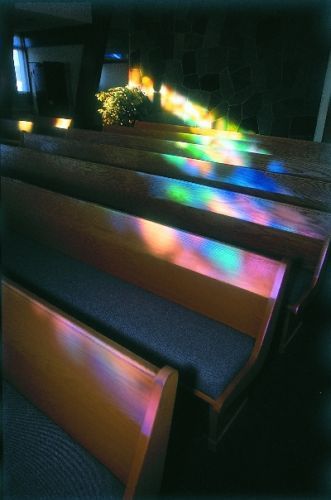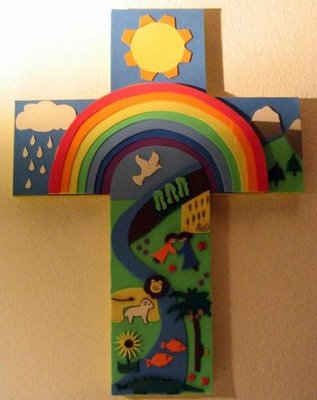 Loyal GetReligion readers will recall that, back in September, I sang the praises of a wonderful New York Times feature story by reporter Warren St. John that began like this:
Loyal GetReligion readers will recall that, back in September, I sang the praises of a wonderful New York Times feature story by reporter Warren St. John that began like this:
When the Rev. Phil Kitchin steps into the pulpit of the Clarkston International Bible Church on Sunday mornings, he stands eye to eye with the changing face of America. In the pews before him, alongside white-haired Southern women in their Sunday best, sit immigrants from the Philippines and Togo, refugees from war-scarred Liberia, Ethiopia and Sudan, even a convert from Afghanistan.
"Jesus said heaven is a place for people of all nations," Mr. Kitchin likes to say. "So if you don't like Clarkston, you won't like heaven."
This story covered all kinds of issues, both inspiring and sobering. It offered a fine look at one of a major news story that rarely makes it into mainstream newspapers. If you are looking for racial diversity in pews, you really need to look in conservative churches -- both evangelical and Catholic, but especially in those that are called either Pentecostal and/or "Bible believing."
This may shatter the news templates of some reporters, but it's true.
So I was happy to open up the Washington Post the other day and spot a story that, I think it is safe to say, may have been inspired by that earlier piece in the hallowed pages of the Times. The leaders of great newspapers have been known to keep an eye on each other, from time to time.
This A-1 piece, by reporter Karin Brulliard, ran under the headline: "Springfield Church Welcomes Many Nations Under God." It is set in suburban Springfield, Va., and near the top readers were told:
On a recent Sunday morning at the Word of Life Assembly of God Church, pink-cheeked Virginia native David Gorman skipped in a conga line in Swahili Sunday school while a Kenyan preacher played an accordion and a Singaporean woman led jubilant hymns. Filipinos analyzed Bible passages in a classroom.
Later, as the Sierra Leonean choir prepared to perform in the sanctuary, D. Wendel Cover, the folksy white pastor, listed the nations of the world and asked worshipers to stand when they heard their homelands. He seemed a bit dismayed to find just 80 represented.
"Our country's becoming more international," Cover, 73, said in an interview. He has led the formerly majority-white Pentecostal church for three decades. "The next generation is going to be American. If the church doesn't realize that, they're going to lose a whole generation."
The Springfield church, congregants often say, is a glimpse of heaven -- a "multitude" of nations and tongues, as the Book of Revelation puts it.
This story wasn't quite as hard-hitting as the Times report, but it focused on the same basic realities in American life and church demographics.
The bottom line: America's liberal and progressive flocks may pride themselves on their work on behalf of racial reconciliation, but if you are looking for diversity in actual church pews on a typical Sunday morning, you are much more likely to find it in an Assemblies of God congregation than in the typical church in the "seven sisters" of the mainline world.
 There are exceptions on both sides, of course. The United Church of Christ, for example, does have some very diverse congregations. There are plenty of all-white evangelical megachurches, too. I am simply saying that -- as a rule -- there is more racial diversity in the actual pews on the conservative side of the spectrum -- especially among charismatics and Pentecostals -- than on the liberal side. This has been true for several decades, but you rarely see this reflected in the news.
There are exceptions on both sides, of course. The United Church of Christ, for example, does have some very diverse congregations. There are plenty of all-white evangelical megachurches, too. I am simply saying that -- as a rule -- there is more racial diversity in the actual pews on the conservative side of the spectrum -- especially among charismatics and Pentecostals -- than on the liberal side. This has been true for several decades, but you rarely see this reflected in the news.
So, once again, I was not surprised to pick up the Baltimore Sun the other day and see yet another report on diversity and racial reconciliation. At first, I thought this was another story following the example set by the Times and Post reports.
I was wrong. This story by Rona Kobell was inspiring, but in many ways it was the mirror image of the earlier reports. It described life in churches that are, sadly, still divided by race. Can you spot the key difference?
The distance between the two Methodist churches in this Eastern Shore village is little more than a mile. Yet for decades, it seemed as if a great gulf separated them.
One church was black. The other was white. Though the two communities in the watermen's town got along fine, come Sunday, people went their own way. White families flocked to Nanticoke Road for prayers at the picturesque Nanticoke United Methodist Church. Black families followed the narrow roads east to the equally pretty Asbury United Methodist Church on Hickman Lane.
Then, about 10 years ago, after the two congregations held a Bible school together, a few parishioners decided that they should get together more often, maybe once a month for worship and a meal.
Like I said, this story has moments that are inspiring. But it is also rather sad. These two churches are one mile from each other, even though they are part of the same flock. What is the source of the divide? Read on, since the story covers some interesting terrain.
Still, I could not help but think that someone at the Sun needs to visit some Pentecostal and evangelical churches, in the booming and increasingly diverse suburbs and inner-ring communities of Washington, D.C., and Baltimore. They may be surprised at what they find. If you doubt that, go back and read those stories in the Times and the Post again.
